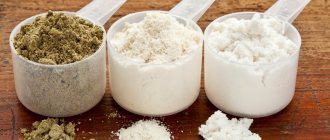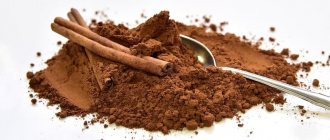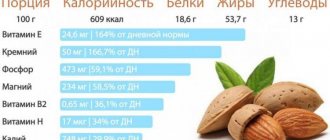One-time serving of protein
A standard protein serving per serving is 25g of protein. Most modern quality proteins have a concentration of 80% protein, that is, 4 out of 5 grams of powder is protein. In this light, to get 25g of protein, you should measure out a 30g serving of protein.
Most standard protein scoops (not gainers!) are this size. If there is no spoon, you can easily mark a similar portion:
Take a standard tablespoon, prepare a bag of protein, feel free to scoop out exactly as much as will fit, i.e. together with a large slide, all that fits is a 40g portion, knock down the slide by eye so that about 3/4 remains, in this case there will be about 30g of protein in the spoon.
How much protein to drink
Take protein in the morning, 1 hour before training and 1 hour after training, as well as between meals or before bed (in short, to your taste).
Each pack contains a special measuring “spoon” - stingy , it contains 1 sufficient serving of protein. One serving size is 30-35 grams (1 scoop/scoop).
The daily norm is ABOUT 2g per 1 kg of weight (same as ordinary protein).
Protein intake frequency
It all depends on your preferences and schedule, but you still need to try to break up your protein intake into several servings, between which there is a period of time during which the protein will have time to digest. The time needed to digest whey protein is 1-2 hours, to digest micellar casein is 8-12 hours.
The best time for taking protein is described below, and it is worth noting that it is not necessary to be so zealous, but taking less than 3 times a day is undesirable - the mass will not trample, taking more than 6 times is again not recommended if you do not use AAS, t .To. You can significantly overload the digestive system, and especially the liver.
- Immediately after waking up, when the nitrogen balance in the blood is low and it urgently needs to be replenished to start the anabolism process.
- Between breakfast and lunch.
- Two hours after lunch.
- One hour before training
- Immediately after training
- Before bedtime. In this case, the most preferred type of protein is casein, which will be broken down during sleep, preventing the catabolism process from starting.
Between protein meals, there must be full meals. Those. The very fact of protein absorption does not give the right to forget about classic food.
- 1 spoon of salt - how many grams (data for teaspoon and tablespoon)
The shortest breaks between cocktails should be in the morning, because... It is in the morning that the lion's share of nutrients should fall. You have the right to vary the hours of protein intake as you wish, this is nothing more than an example.
Protein intake is carried out every day, regardless of whether there is a workout that day.
It is unlikely that experienced and novice housewives ask this question, but for those who want to quickly build muscle mass, it is of considerable interest.
One teaspoon contains 5 grams of protein (this is a small heaped spoon).
According to experts, it is very important
to use protein correctly .
This includes, first of all, a clearly defined amount, as well as a correct distribution throughout the day. If these factors are not taken into account, then training will not bring the desired result. In addition, a balanced diet is also important. In this case, this is a diet with sufficient protein content.
The main products that contain this protein in the required quantity are: lean beef, eggs, milk, which has a small percentage of fat content, as well as cheese, curd products, and tuna. In addition, a sufficient amount of protein is found in legumes: beans, soybeans, as well as in nuts and various cereals.
An important nuance: only a competent combination of proper nutrition, training and protein consumption will achieve the desired result.
Answering the question: “How many grams are in a teaspoon of protein?” you will be able to achieve your goals.
- How many grams of vinegar in a spoon - detailed data plus table
How many grams in a teaspoon
Rating 3.18Total votes: 1267Please rate how useful our service is for you: of your page —> Calculator for the amount of protein in a teaspoon, will calculate how many spoons of protein you need to put in to prepare a dish.
We measure and dose protein correctly
First, about the dosage: the standard dose of protein ranges from 23 to 46 grams - for people weighing from 75 to 120 kilograms, respectively.
Now, if you're looking for a way to measure protein without a measuring spoon, here are a few options to choose from.
- Kitchen scales. Everything is as simple as possible: put the shaker, reset the indicators, and pour in the required amount of concentrate. The measurement results will be displayed on the display.
- Tablespoon. One spoon (without top) contains approximately 12 grams of protein, purely theoretically, measurements can be taken in this way.
- Tea spoon. The option is similar to the previous one, but in this case the weight of the spoon without a slide is 7 grams.
And of course, the simplest option for determining the dose of protein is “scoop” (from the English scoop: spatula, ladle, scoop) - a special measuring spoon that belongs to the category. The question of how many grams are in a scoop of protein cannot be answered unequivocally: depending on your definition of “no slide”, one scoop contains from 23 to 25 grams of protein. That is, in most cases this is enough for a full reception.
Using a protein measuring spoon is quite simple: open the can, scoop out a full scoop, add it to a shaker with liquid and shake. The liquid in which you will dissolve the protein is medium-fat milk, which must be pasteurized, that is, simple store-bought milk. It can also be orange juice or even plain water - it all depends on your preference.
Before you start measuring, do not forget that no concentrate contains 100% protein, the average amount is approximately 75%. Accordingly, if you need 23 grams of protein, and the concentrate contains 75%, then divide 23 by 0.75 and get approximately 30. Any other dosage is calculated using the same method: divide the required amount of protein in grams by the percentage of its content in the concentrate, and we get the answer.
How many grams of protein does one scupprotein contain? How often should you drink it and in what dosage.
It is unlikely that you will be able to achieve the desired results in bodybuilding and build an ideal body solely on food products (even very high-quality ones). Why? — Yes, because the products are not completely absorbed by the body. For example, you can eat a kilogram of pork, but only a fifth is absorbed by the body. It is impossible to calculate how much protein the body received in this case.
In this regard, the option of sports nutrition looks much more attractive. All you need is to buy a pack of high-quality protein, correctly calculate the dosage and time of intake. To make measurements easier, almost every complex has its own scup - a special measuring spoon. But how often should you drink protein? What time? How many grams are in scup? Let's look at these questions in more detail.
First, about the dosage: the standard dose of protein ranges from 23 to 46 grams - for people weighing from 75 to 120 kilograms, respectively.
Now, if you're looking for a way to measure protein without a measuring spoon, here are a few options to choose from.
- Kitchen scales. Everything is as simple as possible: put the shaker, reset the indicators, and pour in the required amount of concentrate. The measurement results will be displayed on the display.
- Tablespoon. One spoon (without top) contains approximately 12 grams of protein, purely theoretically, measurements can be taken in this way.
- Tea spoon. The option is similar to the previous one, but in this case the weight of the spoon without a slide is 7 grams.
And of course, the simplest option for determining the dose of protein is “scoop” (from the English scoop: spatula, ladle, scoop) - a special measuring spoon that belongs to the category of sports accessories. The question of how many grams are in a scoop of protein cannot be answered unequivocally: depending on your definition of “no slide”, one scoop contains from 23 to 25 grams of protein. That is, in most cases this is enough for a full reception.
Using a protein measuring spoon is quite simple: open the can, scoop out a full scoop, add it to a shaker with liquid and shake. The liquid in which you will dissolve the protein is medium-fat milk, which must be pasteurized, that is, simple store-bought milk. It can also be orange juice or even plain water - it all depends on your preference.
https://www.youtube.com/watch?v=ytaboutru
Before you start measuring, do not forget that no concentrate contains 100% protein, the average amount is approximately 75%. Accordingly, if you need 23 grams of protein, and the concentrate contains 75%, then divide 23 by 0.75 and get approximately 30. Any other dosage is calculated using the same method: divide the required amount of protein in grams by the percentage of its content in the concentrate, and we get the answer.
Table
| Gram of protein | Number of teaspoons | With a slide |
| 3 grams | 1 | 0.6 |
| 24 grams | 8 | 4.8 |
| 30 grams | 10 | 6 |
| 35 grams | 11.67 | 7 |
| 40 grams | 13.33 | 8 |
| 45 grams | 15 | 9 |
| 50 grams | 16.67 | 10 |
| 55 grams | 18.33 | 11 |
| 60 grams | 20 | 12 |
| 65 grams | 21.67 | 13 |
| 70 grams | 23.33 | 14 |
| 75 grams | 25 | 15 |
| 80 grams | 26.67 | 16 |
| 90 grams | 30 | 18 |
| 100g | 33.33 | 20 |
| 150 grams | 50 | 30 |
| 200 grams | 66.67 | 40 |
| 250 grams | 83.33 | 50 |
| 300 grams | 100 | 60 |
| 400 grams | 133.33 | 80 |
| 500 grams | 166.67 | 100 |
| 600 grams | 200 | 120 |
| 700 grams | 233.33 | 140 |
| 800 grams | 266.67 | 160 |
Similar calculators:
Author: . Updated 08/19/2017
How many grams of protein are in a tablespoon?
1 heaping tablespoon contains 25 grams of protein.
One level tablespoon contains 15 grams of protein.
- How much soda in a teaspoon and in a tablespoon
How many grams are in a scoop of protein?
One full scoop contains an average of 23 grams of protein.
How to measure protein without scales in grams using a spoon (tablespoon, teaspoon)?
The calculations below on how to measure a certain mass of protein using a tablespoon and a teaspoon are approximate, since the mass of protein of different brands and compositions may differ slightly, and also when using a spoon with a heap, the size of the heap itself may turn out different for everyone:
- 100 grams of protein – how many spoons? 100 g protein = 4 heaping tablespoons of protein.
- 90 grams of protein – how many spoons? 90 g protein = 6 level tablespoons of protein.
- 80 grams of protein – how many spoons? 80 g of protein = 3 heaped tablespoons of protein + 1 level teaspoon of protein.
- 70 grams of protein – how many spoons? 70 g protein = 2 heaped tablespoons of protein + 2 heaped teaspoons of protein.
- 60 grams of protein is how many spoons? 60 g of protein = 2 heaping tablespoons of protein + 1 heaping teaspoon of protein.
- 50 grams of protein is how many spoons? 50 g protein = 2 heaping tablespoons of protein.
- 40 grams of protein is how many spoons? 40 g of protein = 1 heaped tablespoon of protein + 1 level tablespoon of protein.
- 35 grams of protein is how many spoons? 35 g of protein = 1 heaping tablespoon of protein + 1 heaping teaspoon of protein.
- 30 grams of protein is how many spoons? 30 g protein = 2 level tablespoons of protein.
- 20 grams of protein is how many spoons? 20 g protein = 2 heaped teaspoons of protein.
In conclusion to the article, it can be noted that knowing how many grams of protein are in a spoon (tablespoon, teaspoon, measured), you can quickly measure the required mass of powder when preparing a cocktail. We leave our reviews and useful tips on the topic of how much protein is in one spoon in the comments to the article and share it on social networks if it was useful to you.
Chief editor of the site. Cook, technologist, traveler. I love to cook, read interesting articles about cooking and proper nutrition, learn new things and share the most interesting things with others. I am glad to see you on the pages of the InfoEda website.
Email for contact
Content
Do you need a protein measuring spoon? How much protein is in one scoop?
Protein is the leader in sports nutrition. Protein (or in simple words protein) is an organic substance that contains carbon, hydrogen, oxygen and nitrogen.
It supplies the human body with necessary chemical elements. Protein is distinguished from other organic substances by the presence of nitrogen in it.
Protein is present in meat, fish, cottage cheese and other foods. Protein in the human body contains twenty amino acids. Ten of them are irreplaceable
. That is, the human body is not able to synthesize their independence, the remaining ten are replaceable. After protein enters the body, it is broken down into amino acids. Proteins are necessary for the growth and development of muscle tissue, bone structure, etc.
Types of protein
Protein can be found in the form of a powder concentrate containing high-quality protein, as well as in the form of a protein shake.
Currently, there are different types of proteins: whey, egg, casein
, soy and others.
Athletes often purchase whey protein. Contrary to popular belief, it does not have chemical additives. It is obtained from ordinary whey. Protein is equipped with important biological value and is quickly absorbed. Whey protein should be consumed after workouts.
Egg protein is digested within 3-4 hours
.
Casein protein does not mix well in water and is poorly absorbed in the body. Its biological value is 80%. It is advisable to take this protein before bed, but there is no point in consuming it after training.
Soy protein is difficult to digest, but can lower blood cholesterol levels.
Thus, each protein has its own advantages and disadvantages.
On sale you can find complex proteins that are very useful. It is important to know that proteins come from natural products.
Protein measuring spoon
Don't forget about eating rationally. Protein can be taken daily.
How many grams does a scoop of protein contain? A full scoop of protein typically contains about 23 grams of protein.
How to take protein?
1 (one) scoop of protein
pour into a glass with water, juice, milk, etc., the amount of liquid can be any, then mix. Remember that protein should not be stirred in hot water as it will coagulate.
Protein intake depends on your regimen, but it is advisable to portion your protein into portions. Do not consume protein very often, otherwise it will not be absorbed! For example, whey protein is absorbed in about 1-2 hours.
Protein Dilution Rules
It would seem that it could be simpler - dilute the powder with liquid and drink. But there are several nuances in this matter, ignorance of which will lead to a decrease in the effect of the supplement.
Next, we will look in detail at how to properly dilute protein so as to get the maximum benefit from it.
On the water
First, let's talk about how to dilute protein with water.
For this purpose, clean drinking water at room temperature is used.
It is strictly forbidden to use hot water for stirring, since when the protein is heated to 70°C, a process of denaturation occurs—destruction of the molecular structure.
The use of cold water is also undesirable. At low temperatures, the powder dissolves poorly and takes a long time.
To prepare a protein shake, as a rule, the following proportions are used: 200-300 ml of water per 1 scoop of product.
Each manufacturer has its own measuring spoon volume, which may differ significantly in size from other companies. For most, this is 23-25 grams of protein. As a rule, it is located inside the package.
If you want to increase the amount of protein in your shake, use 1.5-2 tablespoons of powder. Accordingly, increasing the amount of water per serving.
There are cases when the powder is diluted only with water and nothing else. This applies to the use of whey, when it is necessary to close the protein window and ensure the rapid flow of protein into muscle cells.
The remaining liquids will take longer to digest, which means absorption will slow down.
The two most important protein windows are immediately after strength training and in the morning after waking up. If whey protein is taken during these periods, the powder is mixed with water only.
With milk
In principle, the recommendations here on how to stir the protein are the same - preferably milk at room temperature.
Depending on the training goals, skim milk is used when gaining lean muscle mass or the first phase of relief work. Or milk with maximum fat content during weight training to increase the calorie content of the drink.
On juice
We figured out how to dilute protein with water and milk. These two methods are traditional options.
But mixing with juice is more exotic, which is theoretically possible, but rarely used in practice.
Almost every can or packet of protein says that it can be diluted with water, milk or juice. And probably everyone who regularly takes protein shakes has at least once tried drinking them in juice. And then I didn’t repeat this idea again.
And there are a number of objective reasons for this:
- It turns out very sweet
Most protein supplements are fairly sweet powdered concentrates designed to be diluted with water or milk. The result is a moderately sweet cocktail. But with juice it’s too much.
- Drink consistency
It can be quite peculiar, as if with flakes. Especially if you choose citrus juices for stirring. For example, orange or lemon. They promote protein clotting.
- Large amount of carbohydrates
To a serving, in addition to 4-6 grams of “native” carbohydrates from protein powder, another 30-40 grams are added thanks to juice. In total it turns out to be 35-45 grams. And these are all fast carbohydrates that have little benefit for the body.
If your body type is ectomorphic (thin, difficult to gain weight), this amount will still be beneficial. Because the main goal of ectomorph training is to gain weight at almost any cost, and the more calories they get, the better.
In all other cases, regular consumption of such an amount of sugar can provoke the deposition of subcutaneous fat.
How not to make a mistake when calculating?
A tablespoon that can be used to prepare protein holds 15 grams (heaped). To prepare an average single dose, you will need two tablespoons of dry matter, which can be dissolved with water, milk, juice, etc. The liquid should not be hot, otherwise the protein will begin to denature, and therefore will not bring all the benefits.
How much protein can a regular teaspoon contain?
It can also be used for making cocktails: it will hold 5 g of dry powder (with a slide), that is, you will need six teaspoons for a single dose.
When calculating dosage, it is important to consider how many grams of protein are in the protein. No supplement can consist only of protein compounds; usually their amount fluctuates around 70%. This means that 100 g of such a pure protein shake will contain only 70 g, so the dosage of dry powder must be increased.
The richest variety in proteins is isolate - its amount can reach up to 95%. Having figured out how many grams a spoonful of protein can contain, it is important to consider the protein content of regular food. If your diet includes meat, fish, eggs and dairy products, it is better to reduce the number of protein shakes you take so as not to burden your kidneys.
How to calculate the amount of powder?
There is another way to measure protein - a measuring spoon: how many grams of powder fits in it
? Manufacturers put it in packaging for ease of use, so just 30 g of dry matter is placed in it. This allows you to simplify the preparation process, since exactly one spoon is enough to prepare a portion of a nutritional shake.
Any formulations are taken immediately after preparation: they should not be left in the refrigerator, as they quickly lose their nutritional properties. Many of them create a feeling of satiety, so a person does not feel hungry for several hours, which is important for those losing weight.
How often should you take the cocktail?
The number of protein intakes during the day is quite easy to determine. To do this, you only need to know the amount of protein the body needs for development. If experienced athletes, as a rule, already know their standards quite well, then a coach can help beginners with this. Knowing the norm, the number of receptions can be determined by dividing it by thirty.
When is the best time to take supplements?
A protein shake is a useful nutritional supplement that allows you to fill the lack of protein in your diet. Proper use and reasonable dosage will help you get effective results. Once you understand how many grams of protein can be contained in a scoop or tablespoon, it is important to decide when to take your supplements.
The daily dose is divided into several servings: fast protein
taken before training and after active exercise, and
slow
should be consumed before bed to avoid starvation during the most active muscle growth.
It is recommended to take any supplements no later than an hour before the start of training, since it is better to exercise on an empty stomach so that nothing interferes with the process. For those who want to lose weight, taking a protein shake should replace a regular meal. Due to its minimal fat content, it will help adjust body volume. In this case, isolate will be the optimal solution, since it contains almost pure protein.
In sports clubs there is an opinion that: “only 30 grams of protein are absorbed at a time, no more is absorbed”…. Sometimes they talk about 35 grams or 40…. I often hear such statements and see them on the Internet.
However, if you ask in more detail:
After these questions the answer is vague. I’m already silent about the fact that people who say this often have no idea at all about the digestive system and protein metabolism in the body. So, we will analyze this protein myth.
1. Let’s compare a person with a height of 165 cm and a weight of 55 kg and a person with a height of 190 cm/105 kg. Do they have the same blood volume, the same muscle mass, the same intestinal and liver sizes... or are they different?
Now suppose that one plays sports and has an increased demand for proteins in his muscle cells, and the other has a sedentary lifestyle... do you feel a hint? Where, in this case, did the even, uniform value of 30 grams come from?
2. digestion and assimilation of proteins, and any other substances, are complex multi-stage processes involving hormones, enzymes and many body systems.
How much is this stingy?
How much is one serving of protein?
1 stingy! Well then everything is clear... or not? What is stingy and how many grams are in it - let's figure it out. Scoop is an English word meaning scoop, scoop, ladle. The most common interpretation in open sources: “On average, 1 scoop is 25-30 grams.” In addition, you can find different information about how much a serving of protein should weigh, and usually these are also different numbers: 23, 25, 30, 32 grams . Where is the correct answer?
The fact is that the measure of protein servings is based on the body’s ability to absorb protein in one meal. Based on many studies, it has been found that the body absorbs 20-30 grams of protein at a time. Whether this is true or not we will examine in a separate article.
But that’s why protein manufacturers defined the portion this way and even offered a special measuring spoon - stingy. If you don’t have a measuring spoon on hand, then read the label of your protein, see how much protein it contains and measure yourself a portion so that it contains about 20-25 grams of protein, not the dry product itself.
Our Meal2Goal protein package comes with a scoop, which makes determining the portion very easy.
You can view additional articles about What is protein and Types of protein in our Blog.
If you translate protein from Latin, you get the word more familiar to us - “protein”. If you studied well at school, then you should remember a lot about the importance of protein for a person and his body, if not, read our article about protein.
Protein is not a chemical, as many people think. Its production is based exclusively on natural products. We get much more harm from our usual food - ketchup, chips, canned food, crackers, and so on.
But first, a little about sports nutrition in general. I don’t know why, but usually people treat sports supplements and everything connected with them with great distrust and some kind of fear! Some people confuse regular sports nutritional supplements with truly harmful illegal chemicals. When they see a person drinking an ordinary protein shake, it seems to them that he is drinking some terrible poisonous crap, and they immediately call him a chemist.
I don't want you to be afraid of the regular protein shake. Let's figure out what regular food additives are, what they are made of, and how they differ from harmful chemicals.
After sleep
When you wake up, your body begins to switch from night to day mode. His energy consumption and nutrient demands increase sharply. It begins to “scan” all possible sources of protein and, if it does not find it in the stomach, it will definitely find it in muscle tissue. It is in order to prevent muscle breakdown and urgently replenish protein reserves that it is recommended to drink a protein shake in the morning after sleep. At least until breakfast, it will satisfy your body’s morning appetite and provide all processes with the necessary protein.











